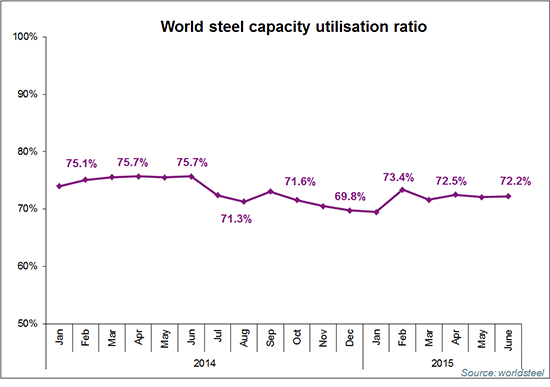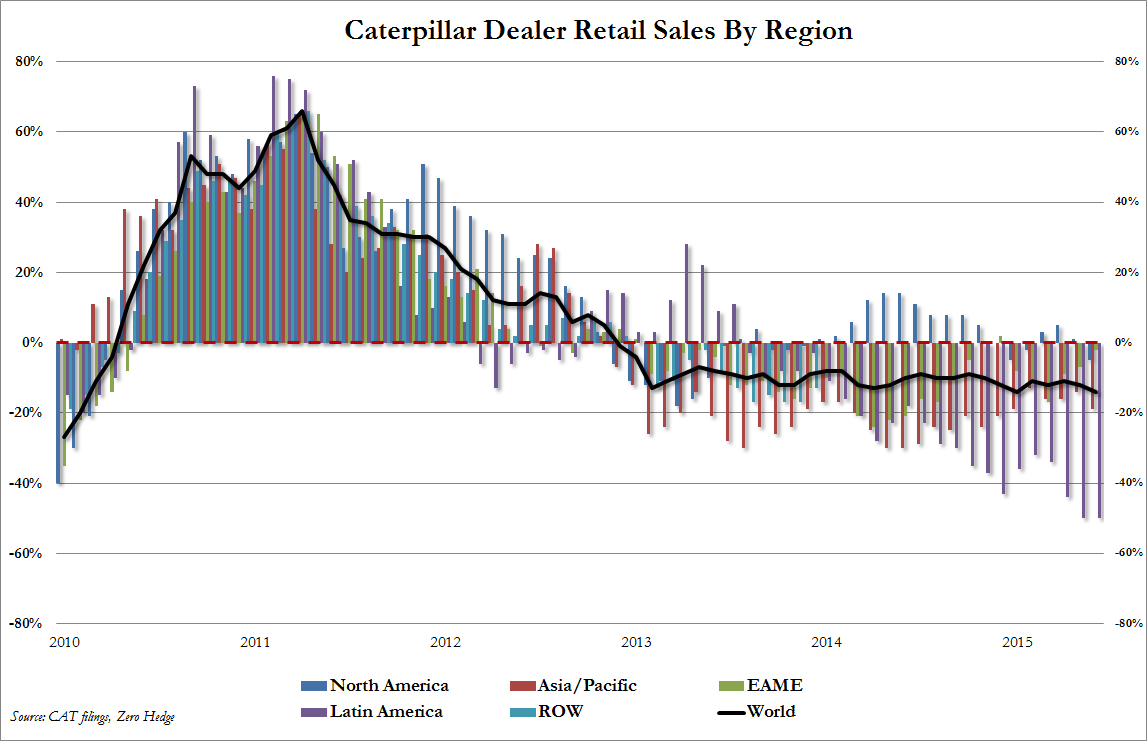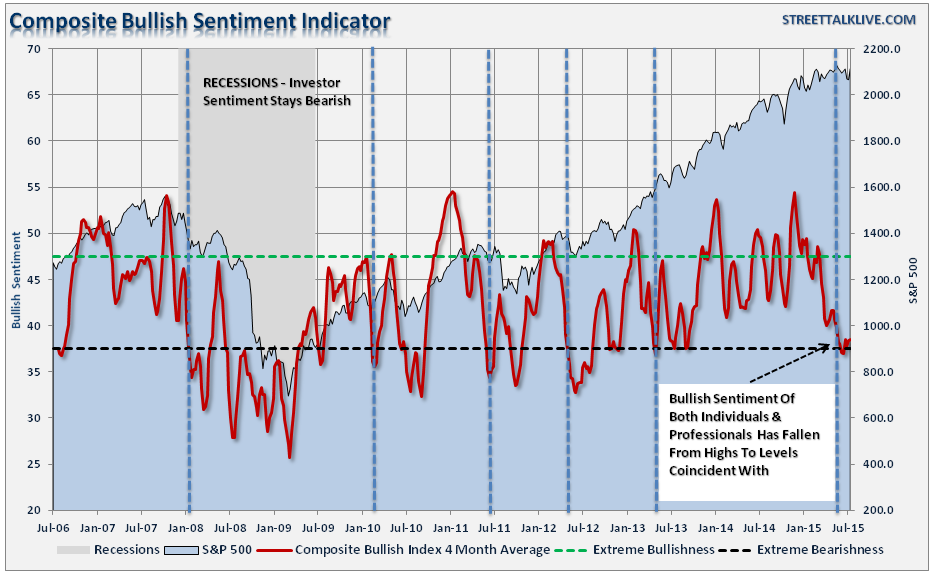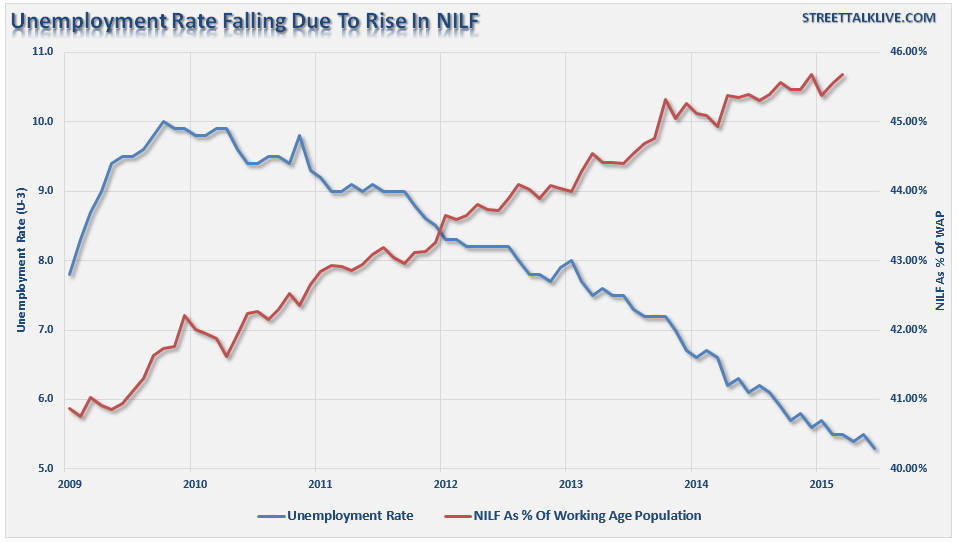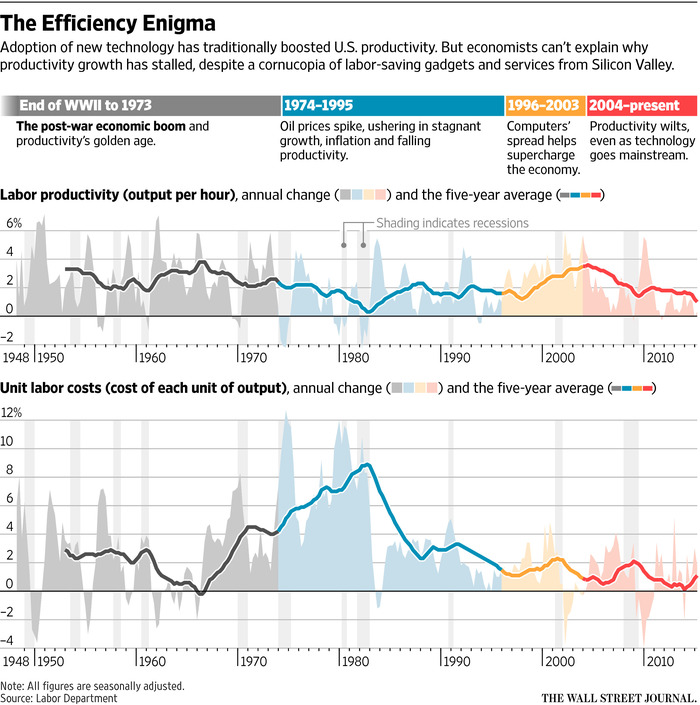Strength Of Steel
On Wednesday I discussed the issues surrounding the Fed's ongoing determination to hike interest rates despite evidence of a weakening economic environment. To wit:
"The Federal Reserve raises interest rates to slow economic growth to keep an economy from overheating which would potentially lead to a sharp rise in inflationary pressures. Since commodities are the basis of everything that is bought, consumed or other utilized; if there were indeed inflationary pressures on the rise commodity prices should be on the rise. As shown, this is clearly not the case."
Wednesday night, the World Steel Association released its June crude steel production report that showed volumes declining to 136 million tons. This is a drop of 2.4% from a year ago.
The decline in steel production, and subsequently the components that go into making steel like iron ore and coking coal, are further evidence that economic activity is far weaker than most analysts currently estimate. This is particularly the case in the U.S. where production of crude steel in June fell by 8.5% on an annualized basis.
Furthermore, the crude steel capacity utilization ratio for the 65 countries that the WSA tracks was 72.2% which is 3.5% lower than a year ago.
It is widely believed the Q1 slump in economic activity was simply a weather/seasonal adjustment error problem. However, there is mounting evidence from other economically sensitive sectors such as retail sales, manufacturing and commodities that there is more to the story.
Steel production is just the latest clue in the solving that puzzle, however, a look at reports (and charts) of basic material companies have been signaling the decline for quite some time. The latest comes from Caterpillar (NYSE:CAT), which once again reported a dismal quarter and even worse forecast.
"While economic conditions in the United States are modestly positive, the global economy remains relatively stagnant. Many of the key industries we serve remain weak, and we haven't seen sustained signs of improvement. Continuing economic weakness in China and Brazil, as well as uncertainty in the Eurozone and over Greece, haven't helped confidence. Prices for commodities like coal, iron ore, and oil are not signaling an improvement in the short term."
As Jim Cramer explains:
"The only conference call you will ever need, is Caterpillar, it is my gospel, my go-to call on which many of my decisions are based... I trust Caterpillar's long-term vision... it is a superb evaluator of what's happening in each of the countries it sells in and gives you the most thorough description of each economy."
The message is pretty clear.
Extreme Bearish Sentiment In A Bullish Market
I discussed earlier this week that many of the internal measures of the market were clearly deteriorating even though the market itself remained within a bullish trend and close to recent highs.
However, while the market itself remains "bullish" the sentiment of investors, both individual and professional, has not. The chart below shows the composite index of bullish sentiment smoothed with a 4-month average. While bullish sentiment is decidedly "not bullish" currently, this is not necessarily a "bullish" sign. As noted by the blue vertical dashed lines, declines in bullish sentiment from previous extremes have been normally seen just before the onset of a bigger correction.
Combined with the deterioration in underlying momentum, breadth, and trend; the suggestion is that "risk" is elevated. As I stated previously:
"For investors, it is not the time to become complacent or dismissive of market action. While recent price declines have not violated or changed the current bullish trajectory of the market, it does not mean that such will not eventually become the case."
Economists Can't Explain Lack Of Productivity
There was a time when the U.S. built stuff. Following WWII, the U.S. was a manufacturing powerhouse that built virtually everything the world needed to rebuild itself. After all, the majority of the major global manufacturing centers of the world from Japan to Russia were devastated by the conflict.
Today, however, in the demand by consumers for ever cheaper prices of goods and services, much of the manufacturing has been outsourced to countries with lower costs. In other words, the U.S. has been exporting inflation and importing deflation by reducing the cost of products and services consumed by Americans.
While outsourcing has reduced costs, it only partially explains the decline in productivity. The biggest culprit in the decline of productivity has been the rapid acceleration of labor-saving technologies. Technological advances in automation, drones, robots, software and hardware have allowed people to do more with less. But wait, that is an increase in productivity, right? Correct.
The problem is that the rise in these technological advances ultimately displace workers. In other words, if one person can now do the work of two or three, then there is in effect less productivity because you have reduced the demand for labor. This goes a long way in explaining the inexorable rise in individuals sitting outside the labor force.
Furthermore, the structural shift in employment from manufacturing to service has also reduced the demand for labor. Service related jobs do not have the same economic multiplier effect that manufacturing related jobs do.
The WSJ recently discussed the perplexing issue surrounding the rise in technology and the fall in productivity.
"U.S. productivity, meanwhile, has hit the skids. From 1948 to 1973, it grew at an annual average of 2.8%. The rate through the 1980s slowed to half that, even as computers spread through the economy, driving everything from welding robots in auto plants to bank ATMs.
From 1995 to 2004, it finally looked like the digital age was paying off: Productivity growth rates closed in on post-World War II highs of near 3%. Then average gains fell to 2% from 2005 to 2009; since 2010, they have dipped below 1%.
Ms. Yellen, in a speech in May, said that over time "sustained increases in productivity are necessary to support rising incomes."
Innovation in technology reduces the need for labor. More individuals are sitting outside the labor force increase the demand for available jobs. Increased competition for available jobs suppresses wage growth. It is a virtual spiral that continues to apply downward pressure on an economy based nearly 70% on consumption.
Importantly, what small increases there have been in unit labor costs have primarily come at the expense of higher benefit and healthcare costs rather than an increase in wages. As discussed previously, for roughly 80% of the working labor force, wages have declined over the last five years.
Janet Yellen is right that wages will have a hard time increasing without a pick up in productivity. The issue is that innovation IS the problem, not the solution. That is unless we begin to include the productivity of robots.
Just something to think about.

